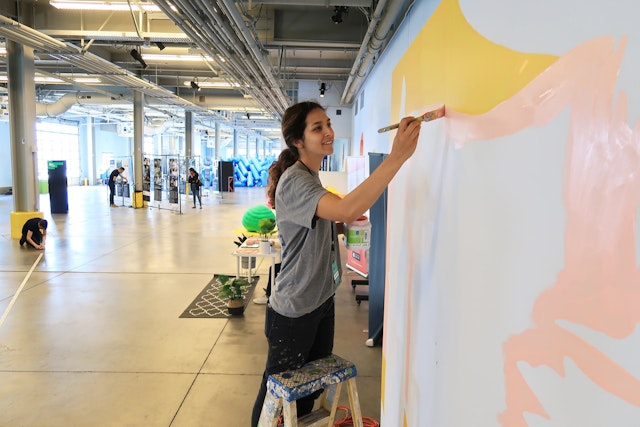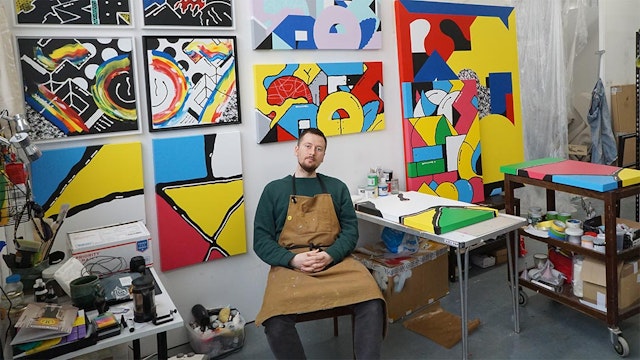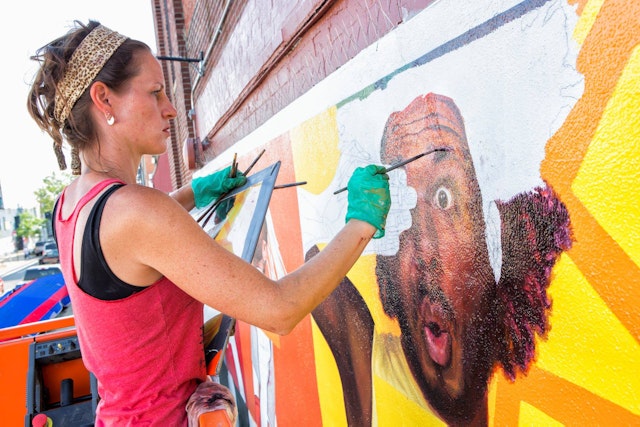Mural firms bear the brunt of OOH’s Covid-19 hit: ‘Everything's come to a grinding halt’
While the big players in out-of-home advertising rely on investors to push through the coronavirus downturn, the small indies that power the corporate mural industry are feeling advertisers’ rapid outdoor rebuff the most.
Out-of-home advertising firms were among the first media casualties of the coronavirus crisis.
Weeks before the UK’s Channel 4 reported a 50% dip in ad revenues, and magazines such as The Jewish Chronicle fell straight into liquidation, OOH giants such as Lamar and Clear Channel were implementing drastic cost-cutting measures, withdrawing guidance and canceling dividends.
“The world has changed dramatically since 5 March when we announced our 2019 full-year results with now more than 2.6 billion people, a third of the world population, in confinement due to the Covid-19,” announced JCDecaux’s chairman and co-chief executive, Jean-François Decaux, on 25 March.
“Given the more substantial confinement measures implemented in many large countries, the trading conditions are worsening with additional campaigns cancellations and postponements in March.”
The reason behind this dip in revenues is straightforward: people the world over are being told to stay home and will not consume outdoor advertising for the foreseeable future.
Industry optimists have argued that pulling OOH spend altogether should not be such a clear-cut decision.
After all, Americans that have to drive to the grocery store see billboard ads on the highway, and reactive outdoor campaigns such as Coca-Cola’s ‘social distancing’ Times Square creative arguably make just a big a splash in earned media as they would have in real-life reach.
Others contend that programmatic out-of-home media buys allow brands to adjust their messaging, reaching consumers with a local message at just the right time outside permitted spots such as food shops and pharmacies.
But one part of the outdoor industry cannot take solace in any of these counterarguments.

Companies that design and paint murals, which have steadily been growing in popularity among advertisers and media agencies in recent years, have been left adrift since stay at home laws first came into effect.
Classed as non-essential businesses, their artists are not allowed out to paint. Even if they could, hardly anyone would be around to see their work. And the inflexibility of wall space and mural designs (impossible to change at the flick of the switch) – coupled with the slow pace at which they’re produced – has meant hand-painted advertising has proven no match for the coronavirus.
“We are affected the same as every other business out there right now – we’re taking a massive hit,” says Ahmad Sayar, senior vice-president of growth at the Brooklyn-based Colossal Media. “Clients are cancelling existing contracts and new ones are not coming in.”
“We got those emails – ‘Sorry, but we’re no longer moving forward’ – one after another in the first few weeks [of the crisis hitting the US],” recalls Mural Painter’s founder Emily Strauss. “That was definitely rough for me: watching all those sales disappearing at my fingertips.”
It’s a similar story with Muros in Chicago (“Everything has come to a grinding halt,” says chief executive Dave Seidler) and several firms in London, none of which felt comfortable speaking on the record.

It wasn’t meant to be like this at all.
The majority of mural businesses The Drum spoke to were preparing for a good year, reveling in increased advertiser spend and a higher volume of events and experiential activations.
This quarter’s cancellations are hurting mural suppliers precisely because they’re happening now.
“We are always significantly busier right around the time the weather starts getting warmer,” explains Strauss. “A lot of media campaigns start advertising around the spring for upcoming summer movies and events, and obviously everything media related has been pulled.
"It really could not have happened at a worse time.”
The majority of companies that broker creative and supply artists for advertising murals are independent, meaning they don’t have large lines of credit and investor generosity to fall back on. While many get to grips with applying for emergency government support and chasing payments, the artists they hire on a freelance basis have been left with no work.
This isn’t necessarily devastating. For the majority of artistic freelancers, mural work makes up only a percentage of their income due in part to its inconsistency.
“You might get a job a month – but then you might get one every six months,” says Darren John, a London-based artist. “As a practicing artist you should know better to rely on this for your main support. Although the jobs are lucrative, they come and go.”
John has invested money made from painting mural advertising into his own artistic practice, which he now has time to focus on building. It’s the same for creatives in the US; Strauss says the artists she works with are appreciating this quiet time to work on their own personal projects and technique.
It’s a different story for those who work off-site.
“Unfortunately, we needed to cut costs fast and that did include payroll, among many other cost saving measures,” says Colossal's Sayar. “We are trying very hard to keep our team intact and are confident that a combination of potential funding and a short timeline between now and back-to-business will get our entire team back to work.”

Ferran Torras, the founder and art director of the Bay Area's Wall and Wall, is doing everything he can to avoid layoffs. He’s launched a GoFundMe page to stay afloat and has persuaded clients to relinquish part of their deposit payments to help with cashflow.
The team members at Wall and Wall – like the majority of mural companies – are using this fallow period to their advantage. They're working to improve SEO and digital marketing to make it clear that the company is still open for business, as well as updating its online portfolio.
“One good use of our time has been implementing a task manager, so now all of our projects are more organized and it’s easy to see who is working on what, especially as we work remotely,” Torras says. “That has been an improvement, and yes, all our books and administrative work are tidier than ever.
“These are things that I had postponed in the past since I was more focused on projects and typical day-to-day activities. But now they have become essential to the business.”
Over in New York, Sayar and the rest of the Colossal staff are working on new, releveant pitch ideas that will be unleashed once the economy restarts. Muros is running a 30-day artistic initiative – #MakeWithMuros – on Instagram while taking the time to recalibrate its overall strategy.
“Before everything changed, we were headed into what would be our busiest month in the history of the company,” says Seidler. “We went from sprinting as fast as we could to hitting a wall. But when that happened, we suddenly had time that we didn’t before.
“We now have some room to really reflect and get very strategic in how we move forward when some sense of normalcy returns. We’d still be sprinting if we had the choice, but this situation has provided us with some luxuries we normally don’t have, and for that, we’re grateful.”
Strauss and her back-end team have been preparing for when work comes in again, namely by starting on fabrications and buying in supplies.
“Once this is back in action we’re expecting serious, serious schedule congestion, so we’re doing everything we can right now to prepare for incoming jobs from the comfort of our own homes," she says.
Strauss, like everyone in this business, is confident demand for murals will soar again once social distancing ends.
She hopes the Covid-19 era will end with people making the time to walk around outside “without staring at their phones – to slow down, look up and actually see these beautiful murals”.
But she – like everyone else – is also reliant on a certain amount of hope to keep her business alive until then.

